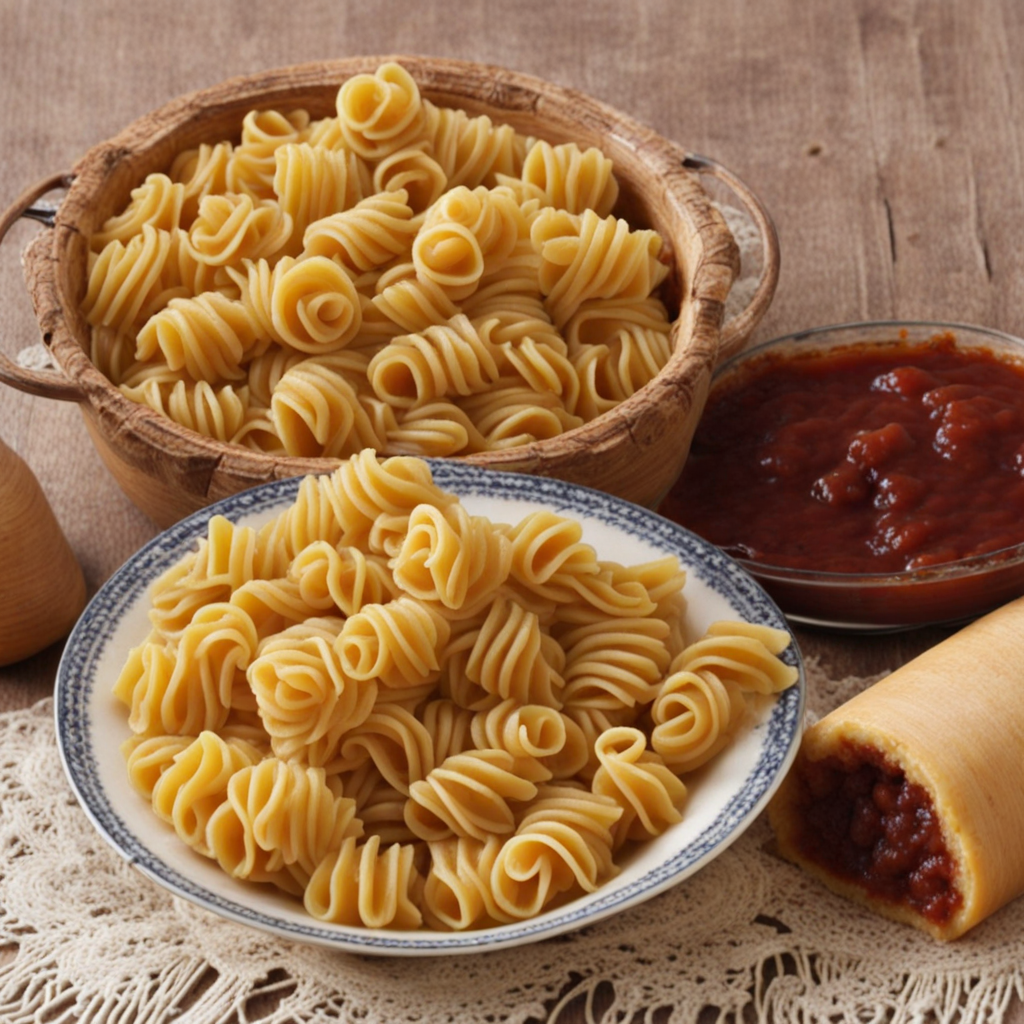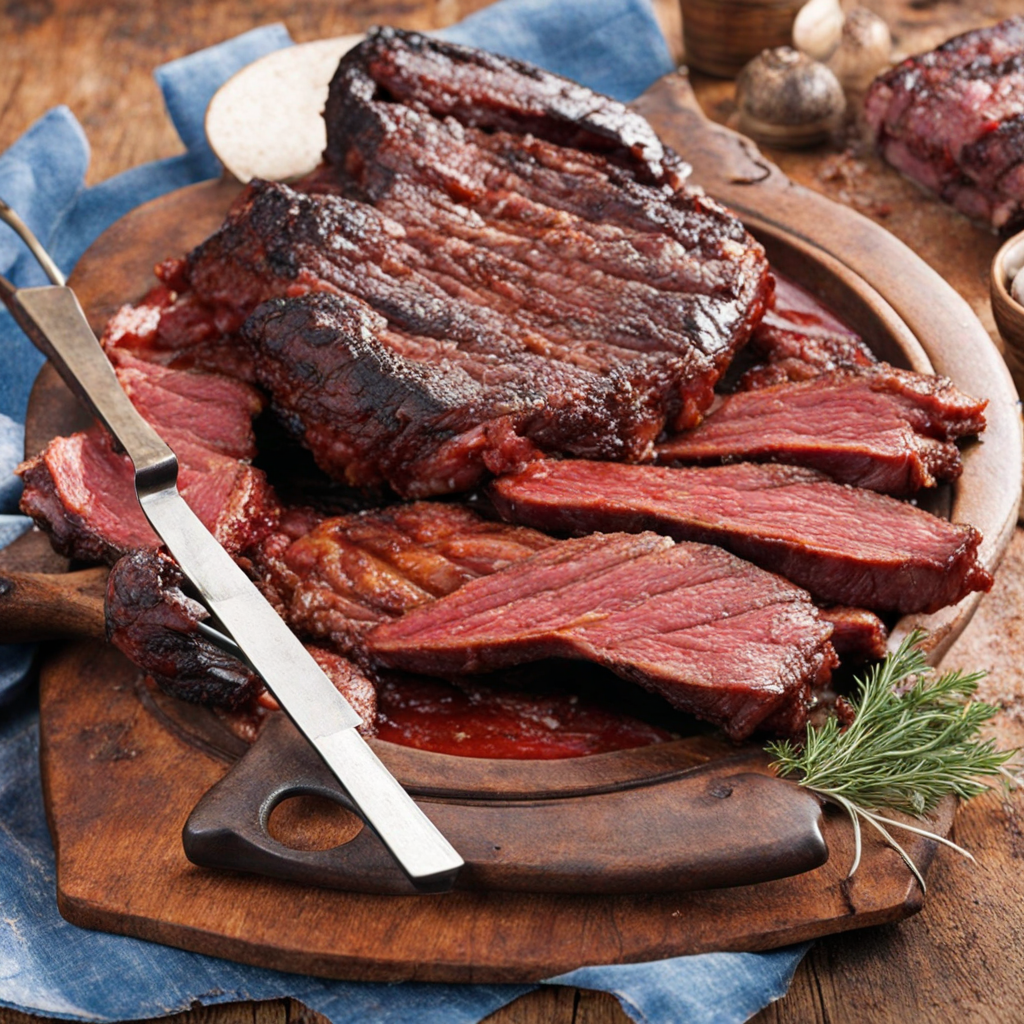Choripán
Choripán is a beloved street food that hails from Uruguay, offering a delightful taste of the country's rich culinary traditions. At its core, choripán is a simple yet satisfying sandwich made with chorizo, a flavorful pork sausage that is seasoned with a blend of spices, garlic, and herbs. The sausage is grilled to perfection, resulting in a crispy exterior while retaining a juicy interior that bursts with flavor. Served inside a fresh, crusty bread roll, this dish embodies the essence of Uruguayan barbecue culture, known as "asado," where grilling is not just a cooking method but a social event. To elevate the experience, choripán is often accompanied by a variety of condiments that enhance its savory profile. The most traditional topping is chimichurri, a vibrant sauce made from parsley, garlic, vinegar, and olive oil, which adds a zesty kick to the rich sausage. Some enjoy it with a drizzle of spicy salsa or a spread of mustard, allowing for personal customization of each bite. The contrast of the smoky, grilled chorizo with the fresh, herbaceous notes of the chimichurri creates a mouthwatering flavor explosion that is both comforting and invigorating. Choripán is not just a meal; it is a cultural experience that invites you to savor the flavors of Uruguay. Street vendors and food stalls often serve this dish during gatherings, festivals, and sporting events, making it a communal food that brings people together. Whether enjoyed on a bustling city street or during a leisurely picnic, choripán promises to transport you to the heart of Uruguayan gastronomy, where every bite tells a story of tradition, passion, and the joy of sharing good food with others.
How It Became This Dish
The Journey of Choripán: A Culinary Icon of Uruguay #### Origins: A Sausage Sandwich with a Story Choripán, a beloved street food that embodies the culinary spirit of Uruguay, is a simple yet flavorful sandwich made of chorizo (a type of sausage) served in crusty bread. Its name is derived from the combination of "chorizo" and "pan," the Spanish words for sausage and bread, respectively. While its precise origins are somewhat elusive, the roots of choripán can be traced back to the early days of Spanish colonization in the Americas. The chorizo itself has a long-standing history in Iberian cuisine, with origins in the regions of Spain where pork was plentiful. The Spanish brought their culinary traditions to Latin America, and as they settled in various regions, they adapted their recipes using local ingredients. In the case of Uruguay, the chorizo evolved into a distinct variety that reflects the local palate, often made from a mix of pork, beef, and spices. The tradition of grilling chorizo and serving it in bread likely emerged in the 19th century, coinciding with the rise of the asado (a traditional barbecue) culture in the Río de la Plata region. Asado is not just a cooking technique but a social event that plays a pivotal role in Uruguayan identity. It’s within this context of communal grilling that choripán found its place as a popular and accessible dish. #### Cultural Significance: More than Just Food In Uruguay, choripán is far more than a mere sandwich; it is a symbol of national pride and identity. It encapsulates the essence of social gatherings, especially during asados, which are a staple of Uruguayan culture. The preparation and enjoyment of choripán often serve as a focal point for family and friends to come together, share stories, and celebrate life’s moments—big and small. Choripán is commonly enjoyed during national holidays, sporting events, and street fairs. It finds a special place in the hearts of Uruguayans, especially during football matches, where it is often sold by street vendors outside stadiums. The aroma of grilled sausage wafting through the air evokes a sense of nostalgia and belonging, making it an indispensable part of the country’s culinary landscape. The dish also reflects Uruguay’s multicultural heritage. The waves of immigrants from various European countries, particularly Italy and Germany, brought their own culinary influences, which have melded into the national cuisine. As a result, choripán is often enjoyed with a variety of condiments, such as chimichurri (a herby sauce), salsa criolla (a fresh vegetable salsa), or even spicy sauces, showcasing the blend of flavors and cultures that characterize Uruguayan food. #### Development Over Time: From Street Food to Gourmet Delight As culinary trends evolved, so too did choripán. Traditionally, it was a humble street food, easily accessible and affordable for the working class. However, in recent decades, it has undergone a transformation, finding its way into gourmet restaurants and upscale food festivals. Chefs have taken the classic choripán and reimagined it, experimenting with high-quality ingredients, artisanal breads, and innovative toppings. This evolution can be traced back to the late 20th century when Uruguay experienced a culinary renaissance. With the rise of a new generation of chefs who sought to elevate traditional dishes, choripán became a canvas for creativity. Some chefs began using specialty chorizos made with unique spices or even incorporating different types of meat, such as lamb or venison, to cater to more adventurous palates. The bread, too, has seen variations, with some opting for gourmet buns or even gluten-free options. In this modern context, choripán has also become a symbol of Uruguay's commitment to local and sustainable food practices. Many chefs now prioritize sourcing ingredients from local farmers and producers, ensuring that each bite is not only delicious but also supports the local economy. Food festivals and markets often feature stalls dedicated to choripán, showcasing the diversity of flavors and styles that can be achieved with this simple dish. #### International Recognition and Influence As the global interest in Latin American cuisine has surged, choripán has gained recognition beyond Uruguay's borders. Food enthusiasts and tourists visiting the country often seek out this iconic sandwich, and it has made appearances in international food festivals and culinary events. The dish has also inspired variations in other Latin American countries, where local ingredients and cooking methods are incorporated. In Argentina, for example, choripán holds a significant place in the culinary landscape, often served at asados and sporting events. While the fundamental concept remains the same, regional variations in spices, bread, and cooking techniques provide a unique twist. The dish's popularity has even led to debates over its origins, with both Uruguay and Argentina claiming it as part of their national identity. The international recognition of choripán has also sparked interest among home cooks around the world, with recipes appearing in various cookbooks and online platforms. As people seek to recreate the flavors of Uruguay, choripán has become a beacon of the country’s rich culinary heritage. #### Conclusion: The Enduring Legacy of Choripán Choripán is more than just a dish; it encapsulates the history, culture, and identity of Uruguay. Its evolution from a simple street food to a celebrated culinary icon mirrors the broader changes within Uruguayan society and its embrace of local ingredients and global influences. As Uruguayans gather around the grill to enjoy this flavorful sandwich, they partake in a tradition that transcends generations, celebrating their rich heritage and the joy of good food and company. As choripán continues to adapt and thrive, it will undoubtedly remain a cherished part of Uruguay’s culinary landscape and a delicious ambassador of its vibrant culture for generations to come. Whether enjoyed at a bustling street fair, a lively asado, or a gourmet restaurant, choripán is a testament to the enduring power of food to bring people together and celebrate shared traditions.
You may like
Discover local flavors from Uruguay







